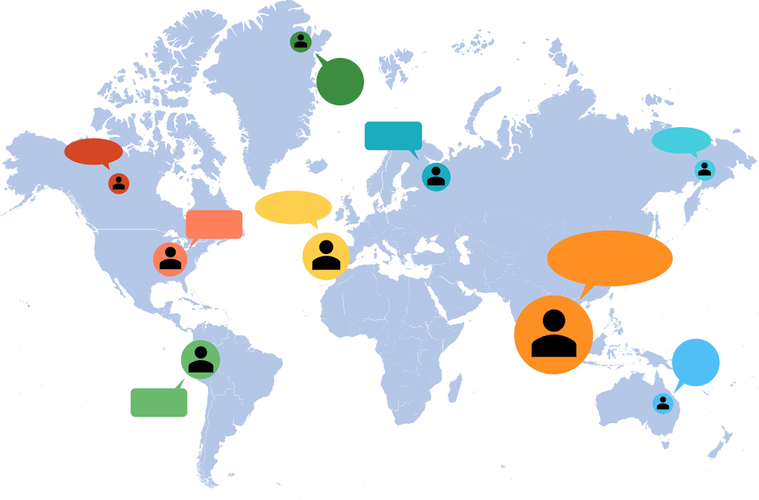Content
- Immersive Virtual Reality as a Tool for Education: A Case Study
- Foreign language learning in immersive virtual environments
- Computers & Education
- AI’s Potential to Society: The Future of AI in Education
- Provide strong & powerful support to get projects from the governments, regarding immersive education systems
- Conclusion and future work
- Prudent VR Guidelines Thus Far
Students can propose and test ideas about how the world works, analyze findings, and make arguments from evidence to justify their assertions . Guided inquiry emerged in the late 1980’s as an effective practice because it had been shown that free, exploratory learning, on its own, could lead to spurious hypotheses. Minimally guided instruction is “less effective and less efficient” (Kirschner et al., 2006), until one has a sufficient amount of prior knowledge. Students benefit from pedagogical supports that help them construct conceptual models, or knowledge structures .
- The learner extended his/her arm in front of the body and rotated it around the shoulder joint.
- Our Centres, Initiatives and Institutes combine research, impact and knowledge with real-world practice.
- Moreover, one of the major benefits of virtual reality in headsets and CAVEs, embodied learner interaction, was left unused, as it was the instructor and not the students who controlled the game at all times.
- Some principles for designing embodied education into MR platforms have been suggested (Lindgren and Johnson-Glenberg, 2013), and AR design principles have been proposed ; however, there are no design guidelines for VR that are based on embodiment.
- In Proceedings of the 47th Hawaii International Conference on System Sciences, (pp. 3025–3034) Hawaii, USA.
Now that this potential has been established, an interesting avenue for future research is to experimentally manipulate individual benefits of CAVEs to gain further understanding of the optimal use of these systems for educational purposes. Perhaps the limited number of studies on collaborative learning using virtual reality headsets is no surprise, given the limitations of these devices. Even though they seem to provide a collaborative experience, they are not able to detect and convey facial expressions required for natural face-to-face interaction. Yet, the absence of facial gestures and other social cues when using current virtual reality headsets were reported to be problematic depending on the task type in a study on collaborative non-educational games (Greenwald, Wang, Funk, & Maes, 2017).
Immersive Virtual Reality as a Tool for Education: A Case Study
Olmos-Raya et al. and Stepan et al. had follow-up assessments at 1-week and 8-weeks, respectively. Of the 29 studies in the current review, 26 scored full marks on the data analysis domain with both an appropriate and sufficiently complex analysis and reporting of the https://globalcloudteam.com/ findings. Three studies scored lower than this due to reporting descriptive statistics only (Angulo and de Velasco 2013; Babu et al. 2018; Ray and Deb 2016). The literature search across the databases yielded more than 12,000 references from a variety of sources.

To me, this capability to attain a first-person perspective will be transformational in education at all levels. After all, there are many things we can teach through books and lectures, but we can’t teach students to internalize the vastness of a billion stars, or the profound smallness of a billion atoms. But in the metaverse, students can discover it for themselves. The possibilities have always seemed endless, but the technology was never quite ready for mass deployment.
Foreign language learning in immersive virtual environments
Given the new affordances of VR hand controls, it seems time to reframe some of this lab’s previous embodied principles. Despite the benefits of CAVEs, few studies have investigated their use for education. Studies comparing the benefit of CAVEs for academic learning over traditional learning methods are especially lacking.

This suggests that the immersive properties of the condition are an important factor contributing to the learning process. In sum, in the few CAVE studies published, benefits of CAVE conditions over more conventional learning methods were obtained for those studies reporting such differences. Additionally, compared to CAVEs, studies employing virtual reality headsets are higher in number, and results of these studies on the benefits for learning have been mixed. This suggests that benefits of virtual environments are not automatic, and require informed design choices to be obtained successfully. This is reflected in Dalgarno and Lee , who purport that when using 3D virtual learning environments, their unique benefits are to be employed for unique learning gains to occur in comparison to using 2D environments. These factors are thus to be considered together with the potential gain in learning benefits of immersive technologies to arrive at an optimal decision for the platform to use.
Computers & Education
In particular, the review found that the utilisation of I-VR is typically restricted to a small number of subject areas such as science and engineering. Furthermore, a heavy reliance has been placed on the MCQ and test score measures to assess learning outcomes. In addition, I-VR interventions were typically short and isolated, and were not complemented with additional or supplementary learning material. Despite this, most studies did find a significant advantage of using I-VR over less immersive methods of learning.

Thus, the spatial ability disadvantage of the low spatial ability group in the textbook condition was effectively mitigated in the CAVE condition, raising the learning gain to the level of the high group. This is consistent with the ability-as-compensator hypothesis, indicating that low spatial ability learners benefitted more from the affordances of the immersive CAVE system as compared to the high spatial ability learners. The CAVE condition thus resulted in higher learning gains compared to traditional textbook learning, with large effect sizes. This is consistent with the findings of Roussou and Slater and Alhalabi who compared learning outcomes after CAVE and more traditional study methods.
AI’s Potential to Society: The Future of AI in Education
Established major subdomains of cognitive ability are working memory, processing speed and spatial ability (Rohde & Thompson, 2007). Of these subdomains, spatial ability seems to be particularly relevant for learning using CAVEs and other immersive display technologies. This can be understood as such technologies offer rich spatial information, especially when compared to more traditional media (Castronovo, Nikolic, Liu, & Messner, 2013; Ragan et al., 2010).
Interactive whiteboard displays create an interactive experience for the next generation of innovators. This is an open-access article distributed under the terms of the Creative Commons Attribution License . The use, distribution or reproduction in other forums is permitted, provided the original author virtual reality in education and the copyright owner are credited and that the original publication in this journal is cited, in accordance with accepted academic practice. No use, distribution or reproduction is permitted which does not comply with these terms. ◦ Rely on informative graphics or mini-animations whenever possible.
Provide strong & powerful support to get projects from the governments, regarding immersive education systems
… practicing telemanipulation skills with sensor augmentation and can provide realistic simulator training (piloting, aerial refueling, etc.).” p. 11. The official website of Immersive VR Education is immersivevreducation.comYou can find their contact number, email address, and headquarters by clicking here. Discover Immersive VR Education alternatives or similar companies to benchmark and competitors’ market analysis. Build a competitive intelligence sales and marketing strategy based on the data and stand out in the market. The anonymized data used for the analysis of the present study are available from the corresponding author following guidelines of the American Psychological Association.